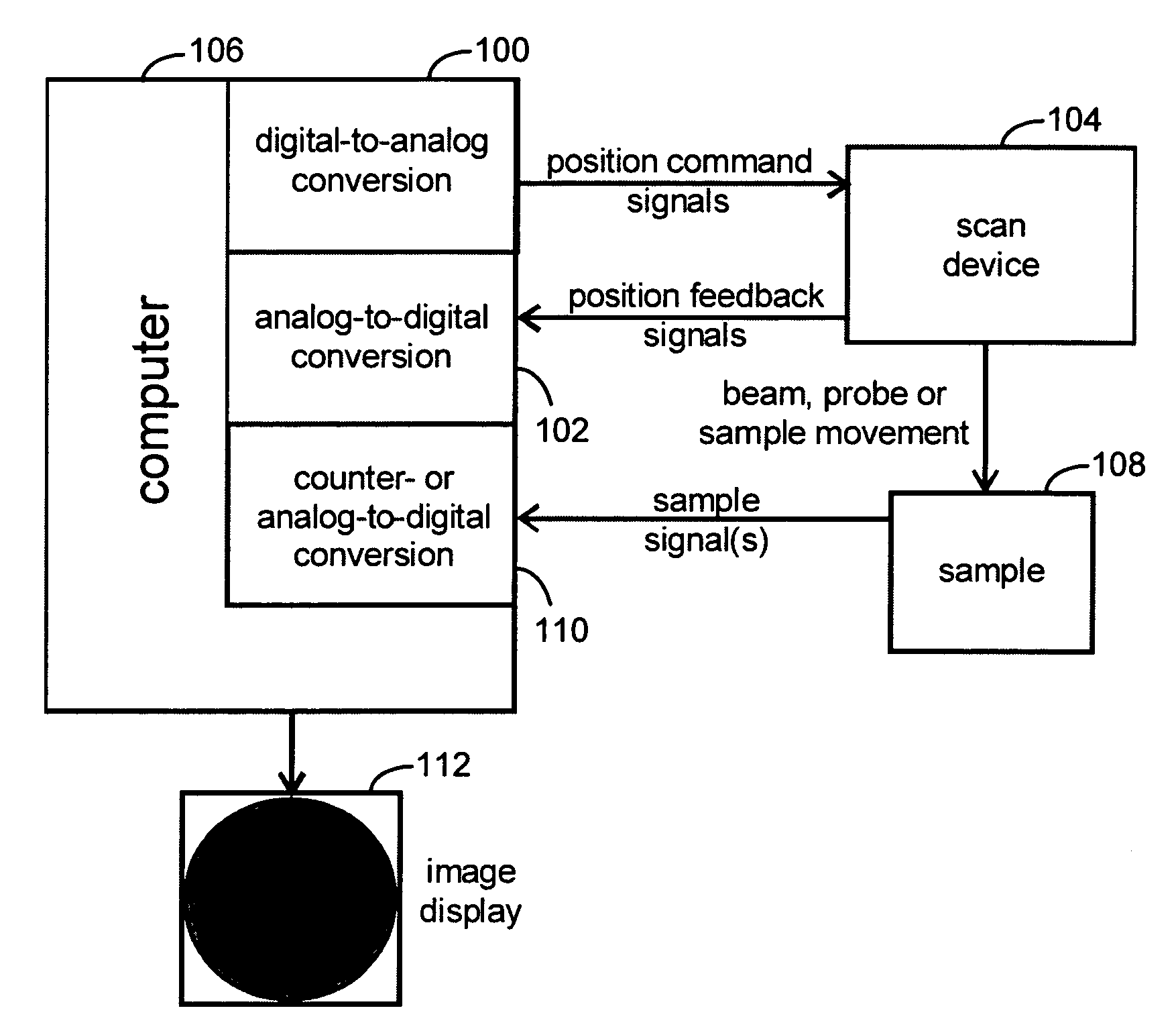Method and apparatus for imaging using continuous non-raster patterns
- Summary
- Abstract
- Description
- Claims
- Application Information
AI Technical Summary
Benefits of technology
Problems solved by technology
Method used
Image
Examples
Embodiment Construction
[0027]The primary factor that limits the rate at which beam-steering devices can operate is the amount of force required to generate movement. Movement can be computed from a=f / m, where f is the applied force, m is the mass of the moving object (e.g. mirror and any attachment components) and a is acceleration (second time derivative of displacement). Force can be generated by electrical energy to produce displacement in electromechanical devices such as galvanometers. A maximal rate of movement arises because of limitations in the ability to both generate and dissipate electrical power within the small volumes occupied by such beam-steering devices. If attempts are made to expand the size of beam-steering devices, additional limits on the mass or complexity of linkages between the force generating device and the mirror assembly at high displacement rates are imposed due to friction and inertia. In order to keep peak forces low, accelerations (in each dimension, including angular acc...
PUM
 Login to View More
Login to View More Abstract
Description
Claims
Application Information
 Login to View More
Login to View More - R&D
- Intellectual Property
- Life Sciences
- Materials
- Tech Scout
- Unparalleled Data Quality
- Higher Quality Content
- 60% Fewer Hallucinations
Browse by: Latest US Patents, China's latest patents, Technical Efficacy Thesaurus, Application Domain, Technology Topic, Popular Technical Reports.
© 2025 PatSnap. All rights reserved.Legal|Privacy policy|Modern Slavery Act Transparency Statement|Sitemap|About US| Contact US: help@patsnap.com



